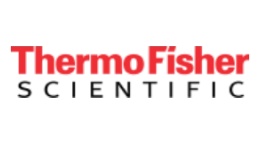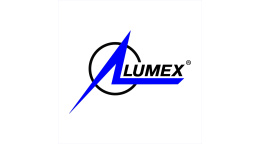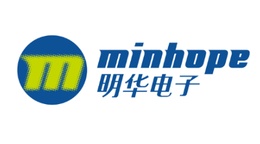方案详情文
智能文字提取功能测试中
OeooaAovikn, 26-28 Maiou 20118o lave入入nvio ETTioTnpoviKó Zuveopio Xnpikns Mnxavikns 8o lave入入nvio ETIoTnuovIKo Zuveopio Xnpikns MnxavikngOeooaAovikn, 26-28 Maiou 2011 Control of mercury and PCDD/Fs emissions from coal combustion processes Ir. Diamantopoulou, A. Palladas, G. Skodras12,3and G.P. Sakellaropoulos 'Chemical Process Engineering Laboratory, Dept. of Chemical Engineering, Aristotle University of Thessaloniki, Thessaloniki, Greece Laboratory of Energy and Environmental Processes, Chemical Process Engineering Research Institute, Thessaloniki, Greece Dept. ofMechanical Engineers, University of Western Macedonia, Kozani, Greece P.O.Box 1520, Thessaloniki 54006, Greece Tel: +30-2310-994374, Fax: +30-2310-996168 E-mail: ediamant@vergina.eng.auth.gr ABSTRACT Emissions of mercury and PCDD/F’s have drawn special attention due to their high toxicityand bioaccumulation that result to adverse effects on human health. In this work twocomplementary techniques for Hg and PCDD/F removal from flue gases have been tested.Activated carbons produced from Greek lignite and two commercial ones were tested for theirmercury removal ability. The observed significant differences in Hg adsorptive capacity wereattributed to the diversified pore structure and surface chemistry of the examined activatedcarbons. Activation process determined the pore structure, while, sulphur addition, treatmentwith HNOs and heating in H2 atmosphere at 1100℃ modified the surface chemistry of theactivated carbons. Adsorption at high temperatures indicated that the adsorption mechanismshould be described as physical adsorption and chemisorption. The ability of certaincompounds (CaO, KOH, NazCOs) to reduce PCDD/F emissions was investigated by mixingthem with the fuel (lignite and RDF) prior to combustion. These compounds were consideredto act either by blocking metal species catalyzing the PCDD/F pathways, or by changing theacidity of the fly ash. The addition of inhibitors prior to combustion shoed in some casesrelatively high reduction of PCDD/F emissions, varied between 50% up to 95%. Keywords: flue gases emissions, mercury, PCDD/F, activated carbon, inhibiting compounds. INTRODUCTION Among toxic air pollutants, mercury and dioxin like congeners (polychlorinated dibenzo-p-dioxins/furans and polychlorinated biphenyls) have drawn special attention due to their hightoxicity and the consequent adverse effects on human health. Their high level ofbioaccumulation in the environment, and particularly in food chain, justifies the increasedconcern for reduced emissions [1-3]. The co-firing of solid wastes with coal has graduallybecome an effective method to reduce the amount of the above pollutants, utilizing their energycontent [4,5]. However, solid wastes often contain high levels of chlorine, which uponcombustion may result in the production of PCDD/Fs [6]. As a result, their removal from fluegases has been the subject of extended research. On the other hand, PCB congeners, whichcontain a biphenyl with 1 to 10 chlorine atoms distributed around the rings, are presented in incinerator emissions in much higher concentrations that PCDD/F and they consist precursors ofPCDD/F formation [7]. Several researchers developed various techniques for the minimization of PCDD/F andPCBs emissions [8,9]. These techniques involve secondary measures focusing on their removalfrom gases, using gas cleaning devices, and primary measures such as adjustment of theoperation conditions or/and addition of inhibitors in the post combustion zone [10]. Althoughactivated carbons have been used in the removal of vapor phase organics from industrial wastegas streams, the above approaches are characterized by high installation and operating costsand the optimization efforts concerning the primary and secondary measures must be realized[11]. During addition of certain inhibitors preventing the formation of PCDD/F, variouscompounds have been proposed [12,13]. The ability of each compound for preventing theformation reactions of toxic substances depends upon a number of parameters, such as the typeof the inhibitor, the combustion conditions and the fuel properties [14,15].Thus, one of thetargets of this work is the investigation of the addition of a low cost inhibitor in the fuel, prior tothe combustion, in order to prevent PCDD/F emissions and to avoid the use of more complicatedand expensive methods, where inhibitors are injected in the post combustion zone. In this research, the approaches adopted aim at reducing both toxic organic pollutants and heavymetals such as mercury in flue gases. Conventional pollution abatement technologies focusing onflue gases treatment, have been proven inefficient for controlling gas-phase mercury emissions,and especially the elemental form of mercury (Hg)[16,17]. This necessitated the developmentof advanced gas cleaning devices based on adsorbents, which are particularly well suited forthe removal of harmful pollutants from the flue gas. Although activated carbons have beenwidely used for heavy metals removal, such as mercury, there are many unsolved problemsconcerning the mechanism of elemental mercury adsorption. The scope in most of the studiesis the selection of a suitable carbon sorbent with large surface area for mercury removal[18,19]. However, there is a limited research concerning the impact of the adsorbent pore sizedistribution on mercury removal, while a lack of knowledge concerns the elemental mercuryoxidation and adsorption mechanism on carbon-oxygen groups presented on adsorbent surface[20,21]. Many researchers focused on the modification of the above surface groups, in order tospecify their role in elemental mercury adsorption. However, the determination of suitabletreatments consist a difficult target in most of the studies [22, 23]. The additional step in thisresearch is the application of thermal and chemical treatment on raw adsorbents, aiming toachieve a stable pore structure and to clarify the coexistence between physical and chemicaladsorption mechanism during mercury adsorption. The objective of this work is the development of abatement methods for organic pollutants(PCBs, PCDD/F) and elemental mercury emissions, during co-combustion of different fuelmixtures. The effect of waste blends addition during the combustion of lignite on the PCDD/Femissions is examined, as well as the impact of certain compounds presence on PCDD/Fformation in laboratory scale reactor. In order to improve the post-combustion removal ofPCBs and elemental mercury and to elucidate some unclear estimation in the literature,adsorption on activated carbons is employed. The mercury retaining capacity is correlated withthe samples pore structure properties and their surface chemistry (oxygen groups, sulphur atoms).Thus, the chemisorption contribution to the total adsorption mechanism will be examined. EXPERIMENTAL Materials preparation and characterization The fuels used in the laboratory combustion tests were Lignite derived from the Ptolemaismine and a mixture of Lignite and an Artificial Refuse Derived Fuel (ARDF), produced frommunicipal wastes, in ratio Lignite/ARDF 80/20. From the proximate,ultimate and ash analysisof the fuels it was observed that lignite has high ash content (46.18 % w/w). Since ash containscompounds like copper that may catalyse the PCDD/F formation, fuel blends with largeamounts of these elements possibly have higher potential for increased PCDD/F emissions [24,25]. The additives studied as dioxin preventing compounds were CaO, KOH and NazCOs. Therole that these inhibitors have is to undergo homogeneous reactions, converting the primarychlorinating agent, Cl2, into a form (HCl) less likely to undergo aromatic substitution reactionsforming PCDD/F precursors, or to alter the catalyst activity, especially copper, in order toinhibit PCDD/F formation. During post-combustion measures and in order to remove mercury and PCBs from gasphase, two commercial activated carbons of different origin (F400 from bituminous coal andRWE from German lignite) and activated carbons produced from Ptolemais lignite have beenused. Ptolemais lignite disposes a high content of mineral matter, which gives the opportunityto produce two different groups of activated carbons, samples prepared from raw lignite (PSK-R) and demineralized lignite (PSK-D). The production procedure is described with moredetails elsewhere [26,27]. The number and type of functional groups presented on activatedcarbon surface were modified by employing methods that maintain the pore structure stable.This was achieved by using two techniques: thermal treatment under H2 atmosphere in order toachieve the removal of the oxygen groups from carbon surface and HNO3 treatment at weakoxidation conditions in order to induce new active sites [28]. Additionally, in order to examinemercury adsorption mechanism, sulphur impregnation of activated carbons was performed byheating them with high purity elemental sulphur flakes under nitrogen flow at 600°℃ and withsulphur to carbon ratio equal to 1:1, aiming to ensure uniform distribution of reactive sulphuratoms in carbon matrix [291. Physical adsorption methods (N2 adsorption at 77 K and CO2 adsorption at 298 K) wereused to characterize the pore structure of the examined activated carbons. BET and Dubinin -Raduchevich equations were used to calculate surface areas and micropore volumes from N2(Vp2) and CO2 adsorption (V2)[30]. By employing two different techniques, Temperature programmed desorption (TPD)analyses and Boehm titration, the number and the thermal stability of total oxygen groups in rawand modified activated carbons have been investigated [31,32]. According to the Boehmmethod, 1 g of each sample was suspended and shaken for 24 h in 50 mL of 0.05 N solutionsof NaHCO3, NazCO3, NaOH, C2H5ONa and HCL in sealed quartz flasks. The method isdescribed with more details elsewhere [33]. Since acid-basic titration accounts only for 50% of the total oxygen content, thetemperature programmed desorption (TPD) of the produced gases during activated carbonthermal treatment was also employed. In particular, 0.1 g of activated carbon was treated underHe atmosphere (55 cm’/min) from 40 to 1100C, with 10°min heating rate. The T pectrarepresent the evolution of H20, CO2, CO and H2 or their combinations and provide a qualitativebehavior of the examined activated carbons under their thermal treatment. Thus, by combiningthe above TPD and Boehm methods the identification of possible active sites for mercurychemisorption was o achieved. Laboratory scale tests for toxic pollutants minimization Thus, the effect of fuel blends and certain compounds addition on PCDD/F formation duringthe combustion of lignite has been examined in a laboratory scale reactor. Combustionexperiments were performed in a laboratory scale horizontal reactor system, by employing fuelmixtures presented in Table 1. Table 1. Test Matrix of primary laboratory and pilot scale tests Fuel mixture CaO Na,CO, KOH Lignite 100 90/10 90/10 90/10 Lignite/ ARDF 80/20 100 90/10 90/10 90/10 The reactor consisted of a quartz tube with 4.5 cm ID and 120 cm length, which was placedin a horizontal type tubular furnace. Solid particles were collected in a glass wool filter placeddownstream the reactor, while three impingers containing a total of 250 ml toluene wereconnected to the experimental rig for trapping PCDD/F from the gas phase. The procedure isdescribed with more details elsewhere [34]. In order to improve the end-pipe removal of elemental mercury and PCDD/F from fluegases, adsorption of elemental mercury and PCB-52 on activated carbon is employed.Laboratory mercury adsorption tests were conducted with activated carbon mass 20 mg, mixedwith 1 g sand, in a temperature controlled fixed bed reactor (0.635 cm inner diameter stainlesssteel column). The experimental setup and the selection of experimental conditions aredescribed with more details elsewhere [35]. A mercury permeation device was used as a sourceof elemental mercury Hg° (VICI Metronics Inc, Santa Clara, CA), designed to produceconstant release of mercury vapor per unit time at the specified temperatures. It was secured ina temperature-controlled stainless steel U-tube holder, and nitrogen at preadjusted constantflow was fed through it. A mass flow controller kept the nitrogen flow constant (200 cm’/min).The Hg° inlet concentration was 0.35ng/cm, and the main body of the experiments wasconducted at 50°C. For the continuous measurement of the outlet elemental mercuryconcentration, a Mercury Instruments Analyzer (Combination model VM-3000-LabAnalyzer254) was used, based on Cold Vapor Absorption Spectrometry. The exhausted breakthroughadsorption curves were misleading and didn’t provide the equilibrium mercury adsorptioncapacity, which can be calculated by integrating the area above them through Equation 1. Thus,due to the time-consuming adsorption experiments up to equilibrium attainment (Cout=0.95 xCin), mercury adsorbed quantities were determined at 60 % of column saturation (Cout=0.6 xCin). Where9adsorbed Hg°adsorbed amount on activated carbon, ng Hg /mg sorbent9in Hg°inlet amount entering the column, ng/mg gout Hg°outlet amount, ng/mg The experimental unit used for PCBs adsorption was similar to one used for mercuryadsorption. The PCB tested inthe adsorptionl tests WasPPCB-52 (2, 2, :5, 5-Tetrachlorobiphenyl). PCB powder was placed in a homemade permeation device, which has the ability when heated to release PCB in the gas phase at constant concentration. Adsorptiontests were conducted with 10 mg of activated carbon mixed with 1 g sand, while particle sizeranged between 150 - 250 um. The two commercial activated carbons and the one preparedfrom demineralized Ptolemais lignite (PSK-D 900°℃ 1h) have been examined for their PCB-52adsorptive ability. The concentration of PCB-52 was measured in the gas phase before andafter the activated carbon column by a Carlo-Erba MEGA 5360 gas chromatograph equippedwith 63Ni electron capture detector (ECD). The initial PCB-52 concentration was 0.15 ppbusing 300 cm/min of nitrogen, while the adsorption temperature was 100℃ [35]. The PCB-52adsorbed amount was calculated at 15 % of column saturation (Cout=0.15 x Cin) by employingEquation 1. RESULTS AND DISCUSSION Primary measures for PCDD/F emissions: The composition of the various fuel mixturesused for the co-combustion tests are shown in the test matrix shown in Table 1, while thecorresponding PCDD/F emissions during combustion tests in lab-scale unit are shown inFigures 1-2. From the analysis of the toxic compounds content in the glass wool filter and thetoluene trap, it was revealed that the main part ofPCDD/F contained in the solid phase, while asmall part (about 10%) was measured in the gas phase trap, indicating that the gas-solidheterogeneous reactions were mainly involved in the formation mechanisms of dioxins. Theaverage PCDD/F concentration during lignite combustion was about 35 ng/kg. During thelaboratory scale tests, co-combustion of lignite with 20%w/w ARDF resulted in PCDD/F I-TEQ emissions of~75 ng/kg. Figure 1.PCDD/F I-TEQ values during combustion of Ptolemais Lignite with and without addition of10% of KOH, NazCO3 and CaO in the laboratory scale reactor. The addition of 10%w/w of CaO in the Lignite and the Lignite/ARDF (80/20) mixture priorto the combustion resulted in reduction ofPCDD/F emissions by 60% when the additions ofKOH led to 80% lower emissions. Significant reduction of toxic gases emissions was occurredalso when NazCO, was added to the fuels, varying from 50% in the case of lignite, up to 95%when it was added to the Lignite/ARDF mixture. Figure 2. PCDD/F I-TEQ values during combustion of Ptolemais Lignite / RDF mixture (80/20 %w/w)with and without addition of 10% of KOH, NazCO and CaO in the laboratory scale reactor. Secondary measures for Hg° and PCBs emissions: Before using activated carbons inadsorption tests, their pore structure and surface oxygen groups have been investigated. The N2and CO2 adsorption results have been calculated elsewhere and the results are presented in Table2341. The results indicated that the activation process affects the textural and chemicalcharacteristics of activated carbons, which determine the extent of physical and chemicaladsorption mechanism. For the examined activated carbons, the increase in BET area, total porevolume and micropore volume is accompanied by an almost proportional increase in mercuryadsorptioncapacity, which has been calculated by integrating the breakthrough curves in Figure 3(commercial samples). Thus, active sites that reside on carbons area have been probably createdduring the whole activation process, as much as concerns the applied conversion rates for theused samples. Mercury adsorption is enhanced not only by the extended surface area, but also bythe well-developed micropore structure combined with a small volume of mesopores in activatedcarbon. The microporous structure improves farther activated carbons adsorptive capacity,since inside the micropores, where the mechanism of adsorption is rather pore filling thansurface coverage, the interaction potential between the solid and the Hg° molecules issignificantly higher than in wider pores. High BET surface areas (528 up to 1024 m /g) andincreased volumes of micropores (70 up to 90 % of total pore volume) have been achieved as aresult of activation conditions adjustment, Table 2. These properties favored mercuryphysisorption mechanism and characterized the commercial bituminous activated carbon F400and activated carbons produced from demineralized lignite at 900℃ for 1 and 6h. Thus, among the examined samples, F400 and activated carbons produced from de-mineralized lignite with extended surface area and high micropore volume presented an increasedmercury adsorbed amount (350 up to 796 ng/mg),Table 2. Table 2. Activated carbons pore structure properties related to Hg° and PCB-52 adsorption Sample Hg'ads. PCB-52 BET CO2 Vtot HB ads. (m/g) (m/g) (cm’/g) (cm/g) amount (ng /mg)* amount (ng/mg) F400 827 840 0.52 0.40 310 13 x10' (S) F400 762 808 0.46 0.22 4901 F400 HNO: 750 744 0.45 0.28 530 F400 H, 801 826 0.47 0.32 3 RWE 374 519 0.29 0.13 152 1x 10' (S) RWE 414 483 0.28 0.13 252 - PSK-R 15min 192 411 0.17 0.08 53 - PSK-R 60 min 66 329 0.07 0.02 7 PSK-D 1h 528 920 0.26 0.23 350 6.7x10' PSK-D 6h 1024 803 0.60 0.43 796 Cout / Cin=60 %,6, Cout / Cin=15% Figure 3. Hg°breakthrough curves for commercial activated carbons. On the contrary, the poor mercury removal efficiency of mesoporous activated carbonsproduced from raw lignite and of commercial RWE reveals that adsorption activity is mainlytaking place in micropores, while mesopores act as transportation paths inside the particle.Additionally, the mineral matter presented in raw lignite has no impact on mercury adsorptionand prevents the microporous structure development in the final activated carbon. Thus, there islimited mercury adsorption capacity in inorganic materials, which are proposed at the same timeas alternative mercury adsorbents from some researchers. All activated carbon tested have effectively adsorbed PCBs and they exhibited quite higherPCBs than mercury removal efficiency, Table 2. The comparison of the adsorption resultsshows that the microporous activated carbons, with high BET area and pore volume achievehigher PCB-52 adsorption. On the other hand, PCB-52 adsorption on the commercial RWEwith mesoporous structure was quite small, Table 2. However in this case, mesopores act alsoas adsorption sites for PCB-52, since it is a larger molecule compared to mercury. Additionally,the surface chemistry modification techniques have not alterate the pore structure properties ofthe initial samples,Table 2. Table 3. Boehm acid- base titration results of F400 and the modified samples. Base-Acid Sample (mmoles/100 g) F400 F400 H 1100°C, 3h F400 1N HNO: NaHCO: 0.5 0.15 36.3 NazCO 2.4 1 45.7 NaOH 2.45 1.8 46.5 C2H5ONa 11.6 4.3 131.5 HC1 11.7 25.5 30.5 pH 9 10.2 5.2 Table 4. Surface acidic and basic groups of F400 and the modified samples. O-group Sample (mmoles/100 g) F400 F400H 1100°C,3h F400 1N HNO: Carboxyls 0.5 0.15 36.3 Lactones 1.85 0.85 Phenols 0.1 0.8 Carbonyls 9.15 Total acidic 11.6 131.5 Total basic 11.7 25.5 30.5 Total groups 23.3 29.8 162 This result consist the base for focusing on the role of activated carbons surface chemistry.From the Boehm titration results, Tables 3 and 4, an increase in F400 basic characteraccompanied with an important decrease in strong (carboxyls, lactones) and weak (carbonyls)acidic oxygen groups is observed after H thermal treatment. This is confirmed by the TPDprofile of H2 treated F400, where the peaks, which were initially placed in the TPD spectra ofraw F400, have been eliminated, Figure 4. Temperature (C) Figure 4. TPD curves for F400 and its modified samples. On the contrary, lactones and carbonyls, as well as all acidic groups determined in raw F400have been multiplied after the HNOs gentle oxidation procedure, Tables 3 and 4. Figure 5. Contribution of sulphur and oxygen groups on Hg° adsorption mechanism. From the above surface chemistry analysis results, it was observed that mercury adsorptionwas enhanced by the presence of oxygen groups, such as lactones and carbonyls, as well as bysulphur atoms presented in carbon matrix, which act as chemisorption sites, Figures 5-6. Thisreveals that the adsorption mechanism should not be described as a sole physical adsorption. Inparticular, mercury adsorbed amount increased at about 70 % with the increase of lactones andcarbonyls on F400 surface at 50°℃ adsorption temperature. Lactones and carbonyl groups havebeen found to be active sites for mercury binding,yielding binding energies of -10.29 and -9.16kcal/mol, respectively. The presence of phenol and carboxyl groups has yielded relativelylower binding energies, -6.72 and-1.22 kcal/mol, respectively. Hg°adsorbed amount (ng/mg activated carbon) Figure 6. Oxygen groups modification and Hg°adsorption. More specifically, the presence of lactone and carbonyl functional groups promotes thechemisorption of elemental mercury by accepting the two electrons existing in its outer layer,resulting in the oxidized Hg’ on carbon surface [36, 37]. Phenol and carboxyl functionalgroups promote a physisorption mechanism of mercury adsorption [38]. Figure 7. Hg° adsorption at 150°C. Contribution of chemisorption in total Hg° adsorption mechanism. After sulphur addition, mercury adsorbed amount approached 5000 ng/mg of carbon. Thiswas much higher than the adsorbed amount in the initial sample, Figure 5. In this case, themechanism for elemental mercury adsorption is governed by the reaction between the reactivesulphur atoms (S2-S4 allotropes) and elemental mercury on carbon surface. Because elementalsulphur and thiophene are the two major species produced at lhigher impregnationtemperatures, it is reasonable to assume that either one or both of the two species function asmercury uptake sites [39]. The same effect was observed at 150℃, indicating the dominationof chemisorption in the high temperature range, Figure 7. By employing the above surfacechemistry modification methods, the role of oxygen groups on carbon surface was isolated, andtheir influence on mercury adsorption with the contribution of chemisorption mechanism, waselucidated. CONCLUSIONS Aiming to achieve cleaner combustion of solid fuels, the efficiency in removing toxic pollutingcompounds (Hg°, PCB, PCDD/F) of commercial and home-made activated carbons wasevaluated. The obtained results showed that all activated carbons tested are suitable for theremoval of toxic compounds (i.e., Hg, PCBs, PCDD/Fs) from the gas phase. The high BETsurface area and large pore volume and the the microporous structure enhance Hg° retentionfrom the gas phase. Apart from pore structure, the surface chemistry and more specifically thesurface oxygen functional groups seem to affect the Hg° adsorptive capacity of the activatedcarbons, since an oxidation-reduction mechanism is possibly involved in Hg°adsorption andcarbon surface accepts electrons, acting as an electrode. Lactones are believed to act aspotential active sites for mercury adsorption, while phenols may act as inhibitors. In the presence of sulfur, both activated carbons displayed significantly increased mercury adsorptioncapacity, since chemisorption, facilitated by HgS formation on the surface area of the activatedcarbons, controls the ability of the S impregnated sorbents. In this case, sulfur spread on thecarbon surface accepts electrons from mercury and enhances the electrode behavior of thecarbon surface. The removal of PCBs and PCDD/Fs from the gas phase seems not to be aproblem for the activated carbons tested, regardless of their pore structure or surface chemistry.A series of co-combustion tests was performed in lab-scale incinerator, and the emissions ofpolychlorinated dibenzo-p-dioxins (PCDDs) and dibenzofurans (PCDFs) were measured. Theco-combustion behaviour of lignite with ARDF was studied and the ability of additives such asCaO, NazCO, and KOH to reduce the PCDD/F emissions was examined. The application of thenewest technology of inhibitor addition to the fuel prior to combustion showed that in somecases, a relatively high reduction of PCDD/F emissions was achieved,although, that behaviourwas not stable. For all cases, 10% CaO, NazCO3 and KOH addition resulted in decreasedemissions; thus, they can be effectively used to inhibit PCDD/F formation. REFERENCES 1. Aries E., Anderson R. D., Fisher R., Fray A.I.T. and Hemfrey D., Chemosphere.65:1470(2006). 2onati G., Cernuschi S., L Giugliano M., Grosso M., Chemosphere. 67:334 (2007).3 Wang B.J., Wang M.-S., Yang-Wu E.M., Chang-Chien G.-P., Lai Y.-C., Journal ofHazardous Materials. 152:968 (2008). 4Hedman B., Burvall J., Nilsson C., Markland S., Waste management. 2 7:1580 (2007)5 ( Lu S .-Y., Yan J .- H ., Li X.-D., Ni M.-J. and Cen K .-F., Journal of EnvironmentalSciences. 19:762 (2007) ) 6Lee K.C.V., Cheung W.-H. and McKay G., Chemosphere. 70:682 (2008).789 ( Pandelova M., Lenoir D. a nd Schram K.W., Chemosphere. 62:1196 (2006). ) ( H unsinger H., Jay K. and Vehlow J., Chemosphere. 46:1263 (2002). ) ( Smolka A. and Schmidt K.-G., Chemosphere. 34:1075 (1997). ) ( H utson D.N., Ryan P . S. and Touati A., Atm 10. ospheric Environment. 43:3973 (2009). ) Chi H.K., Chang H.S., Hang H.C., Hang C.H. and Chang B.M., Chemosphere. 64:1489(2006). ( 12. Samaras P., B lumenstock M . , L e noir D . , Schramm K.-W., Kettrup A., Ch e mosphere.42:737(2001). ) ( 13. Ruokojarvi P .,Tuppurainen K ., M ueller C ., Kilpinen P ., Ruuskanen J ., Chemosphere.43:199(2001). ) Lindbauer R.L., Wurst F., Chemosphere. 25:1409 (1992). ( McKay G., Chemical Engineering Journal. 86:343 (2 0 02). ) ( Gullett B.K., Environmental Science Technology. 26:1938 (1992). ) ( T uppurainen K . , Halonen I. , Ruokojarvi P . , T a rhanen J., Ruuskanen J. , Chemosphere.36:1493 (1998). ) ( Galbreath C. K. 18 , a nd Zygarlicke C.J., Fuel Process. T echnol.289:65 (2 0 00). ) ( Olson E .S., Miller S.J.,Sharma R.K., Dunham G.E.and Benson S . A.,J. H azard.Mater. 74:61 ( 2000). ) 20. Vizuete M.E., Garcia-Marcias A., Gisbert N.A., Gonzalez F.C. and Serano G.V.,Journal ofHazardous Materials. B119:231 (2005). Mercedes M.V.,,-M., Yinzhi G., Evan G.J., Zhong T., Henry P.W., Fuel. 84:105 (2005). Lee S.S., Lee Y.J. and Keener C.T., Fuel Processing Technology. 90:1314 (2009). BChung T.S., Kim I.K. and Yum R.Y., Fuel Processing Technology. 192:47 (2009). Hassett D.J., and Eylands K.E., Fuel. 78:243 (1999). Hwang J.Y., Sun X. and Li Z., Journal ofMinerals & Materials Characterization &Engineering.1:39 (2002). Hagenmaier H., Brunner H., Chemosphere. 16:1759 (1987). Halonen I., Tuppurainen K., Ruuskanen J., Chemosphere. 34:2649 (1997). Skodras G., Orfanoudaki Th., Kakaras E. and Sakellaropoulos G.P., Fuel Process.Technol. 75:77 (2002). 29. Diamantopoulou Ir., “Mercury removal from flue gases by using activated carbons”, PhDThesis, Chemical Engineering Department, Aristotle University of Thessaloniki, Greece,(2009) 30. Castilla-Moreno C., Marin-Carrasco F., Hodar-Maldonado J.F., and Utrilla-Rivera J.,Carbon. 36:145 (1998). Lee S.-H. and Park Y.-O., Fuel Processing Technology.84:197 (2003).3 Boehm H.P., Carbon. 40:145 (2002). ( Honoria G .F., Joao M .P., F ilomena C ., F ernando P.M. a n d F i geueiredo J . L., C arbon.46:1544(2008). ) 34. Diamantopoulou Ir., Skodras G., Palladas A. and Sakellaropoulos G.P., CCT 2011,Proceedings,(2011), In Press. 35. Skodras G., Diamantopoulou Ir., Zabaniotou A., Stavropoulos G. and SakellaropoulosG.P., Fuel Processing Technol ,88:747 (2007). 36. Skodras G., Diamantopoulou Ir., Natas P., Orfanoudaki Th. and Sakellaropoulos G.P.,8"ICEST, Proceedings, (2003), p.800 37. Figueiredo J. L., Pereira M. F. R., Freitas M. M. A., and Orfao J. J. M., Carbon. 37:1379(1999). Li Y.H., Lee C.W., and Gullett B.K., Fuel, 82:451 (2003). Feng W., Borguet E., and Vidic R., Carbon. 44:2998 (2006). of
关闭-
1/12

-
2/12

还剩10页未读,是否继续阅读?
继续免费阅读全文产品配置单
北京诚驿恒仪科技有限公司为您提供《VM-300O、Lab-254用于煤燃烧过程中汞的监测控制.pdf》,该方案主要用于废气中(类)金属及其化合物检测,参考标准《暂无》,《VM-300O、Lab-254用于煤燃烧过程中汞的监测控制.pdf》用到的仪器有德国MI VM-3000汞蒸气测汞仪、德国MI AULA-254 Gold实验室全自动测汞仪、德国MI LabAnalyzer 254实验室快速测汞仪、德国MI SM-3烟道气汞分析仪、德国MI SM-4 Mobile烟囱气体-汞监测器。
我要纠错
推荐专场
烟气汞连续监测系统(Hg-CEMS系统)
更多相关方案


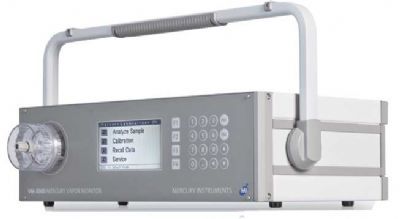

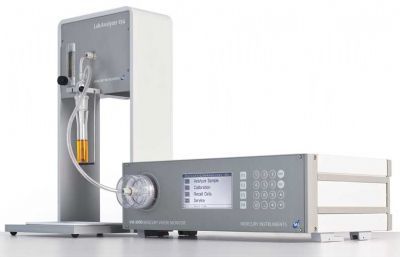
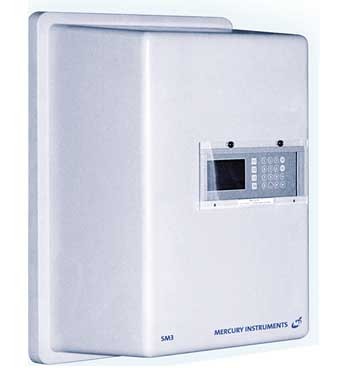
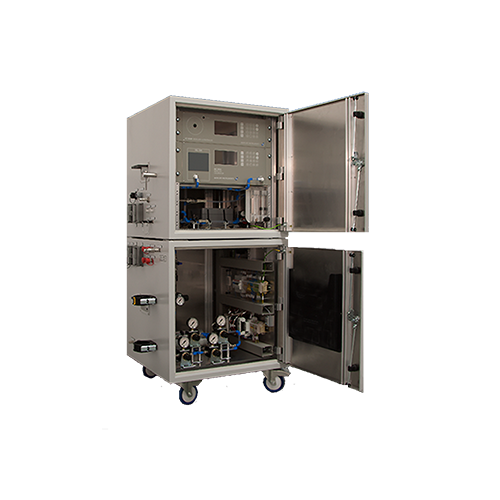

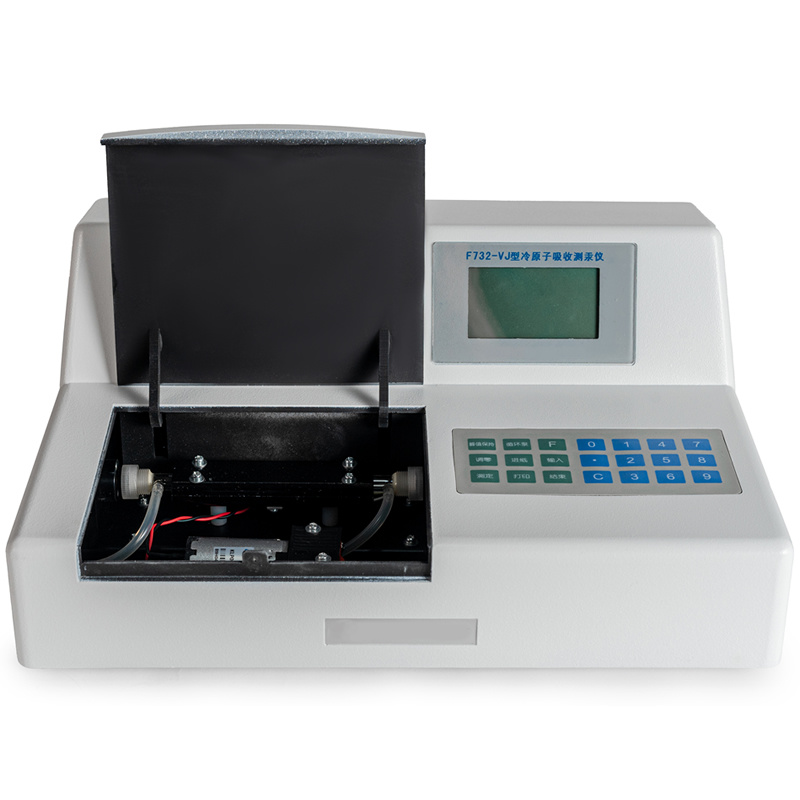
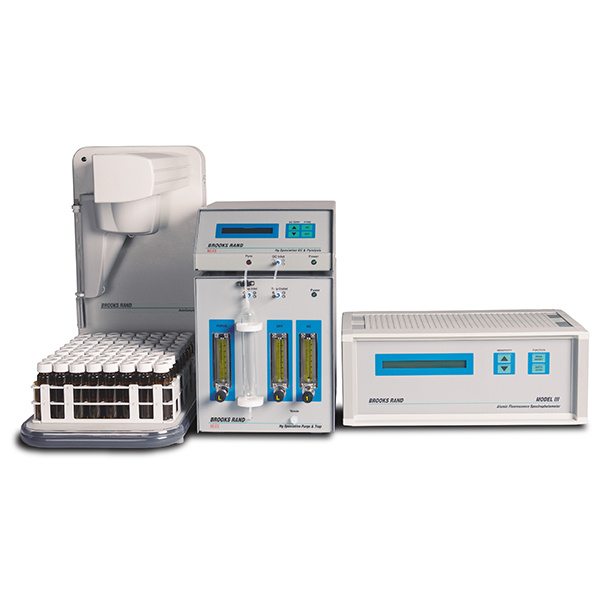
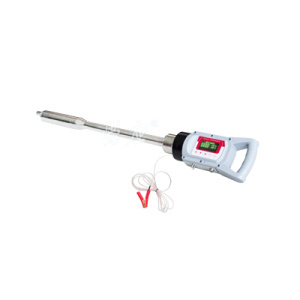

 咨询
咨询

